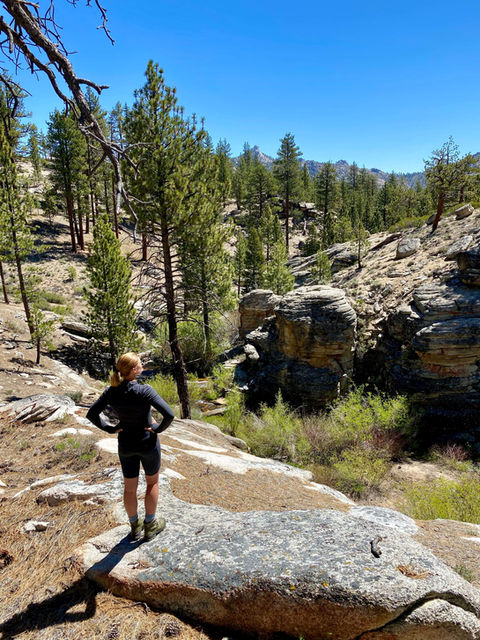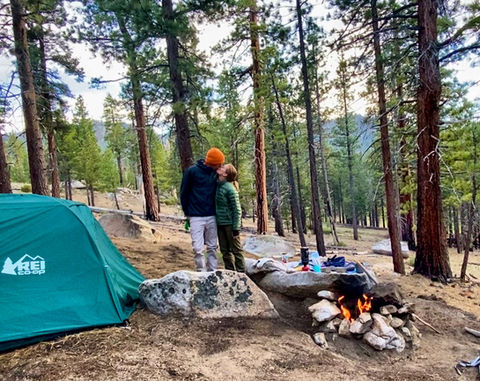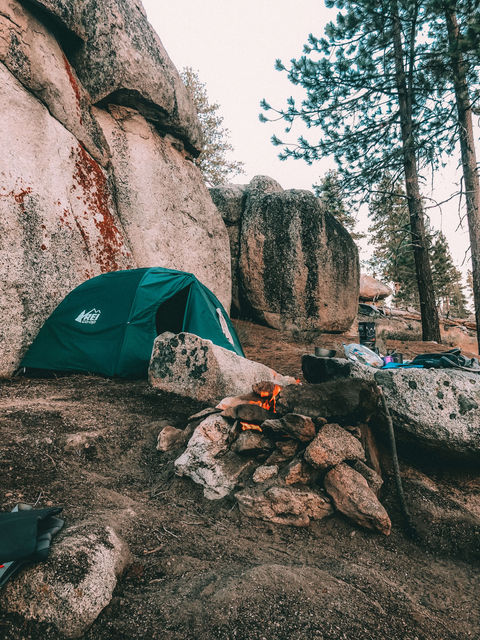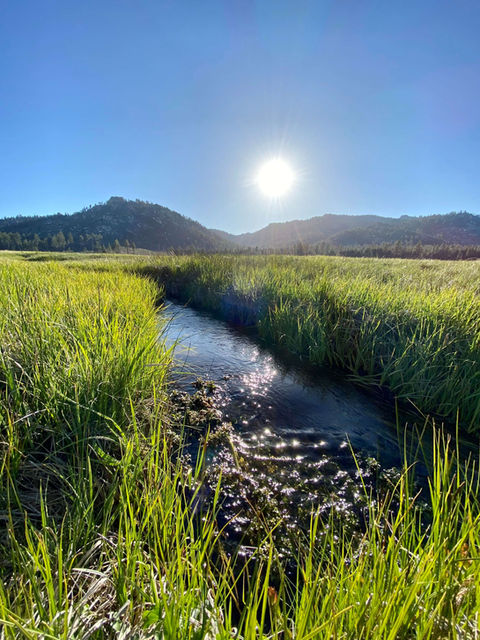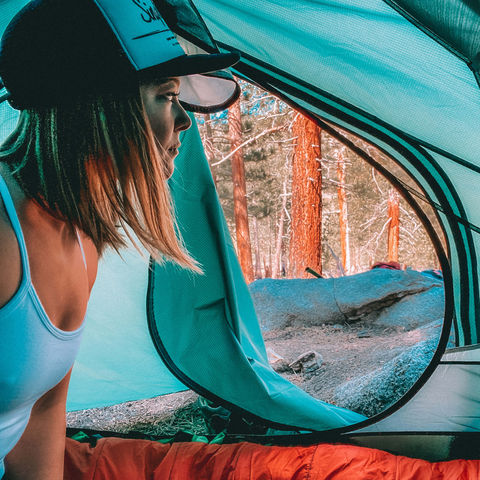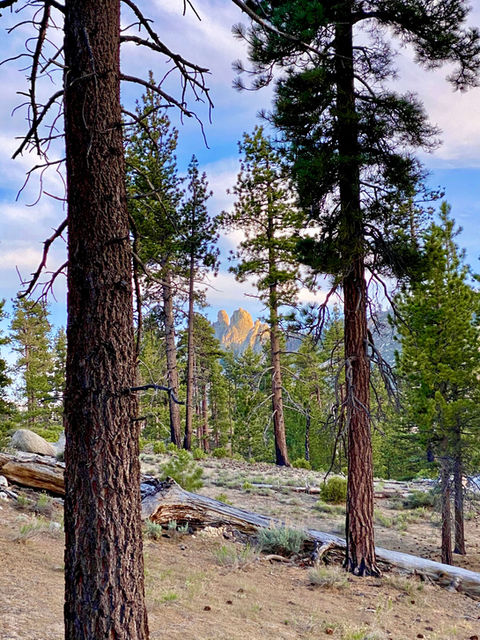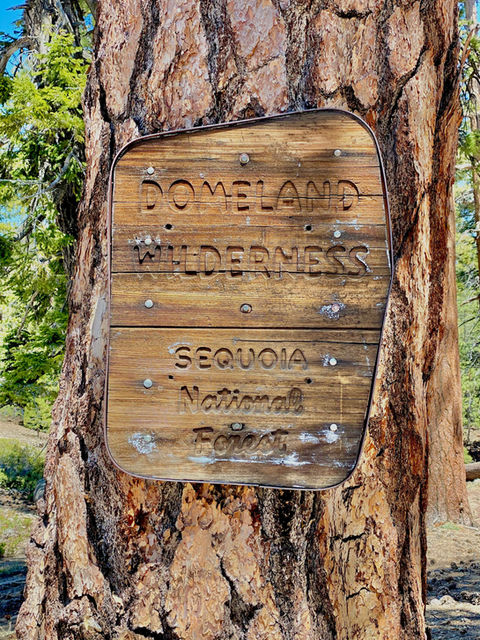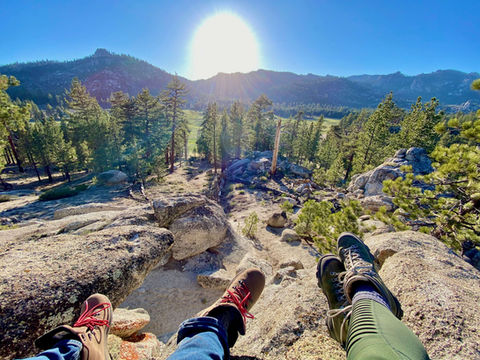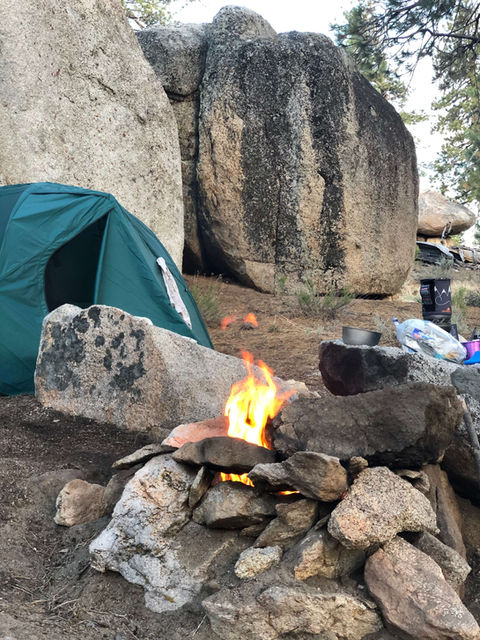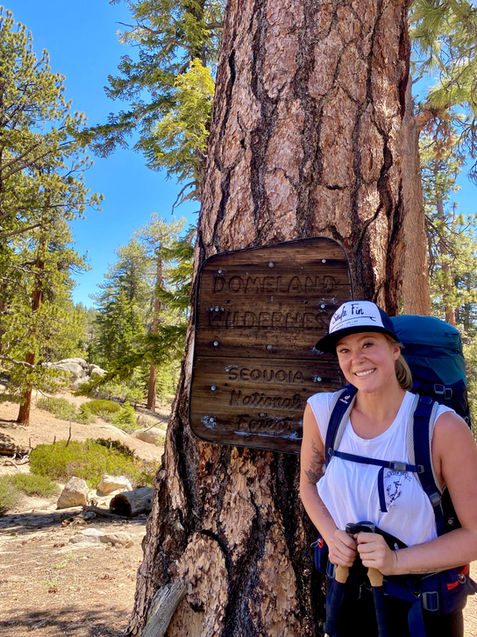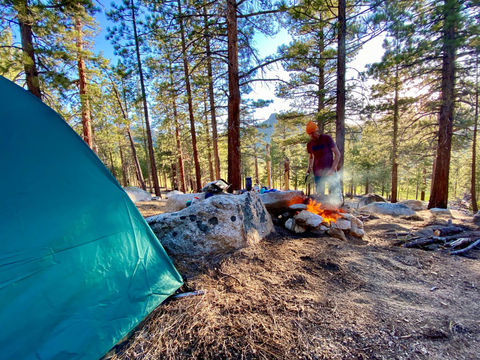Domeland Wilderness
It’s very likely you’ve never even heard of the Domeland Wilderness. If you have, you’re way ahead of the curve. I’ve lived in California my entire life—growing up in the mountains in Northern California and later moving to Southern California—and before my husband mentioned this place he went backpacking as a teenager, I had never even heard of the place. He recounted visions of stunning rock formations, much like what you’ll see at Yosemite National Park, but without all the people. He talked it up so much that I had trouble believing it was as great as he recalled—after all, this trip he took was close to 20 years ago. But not only did Domeland wilderness live up to the hype, but it may have been better. This is an account of our four day backpacking trip into the beautiful untouched wilderness in the Southern Sierras that is commonly referred to as “Domelands”.
We decided to do our four day backpacking trip over Memorial Day weekend, which was still during the Covid-19 pandemic, and still while California had issued stay at home orders. But after feeling so antsy with no travel for months and no travel in the foreseeable future, we figured we would try something “off the grid” and get away from the people for a bit. It truly was the perfect decision.
Over the course of the four days that we hiked in, camped and hiked back out again, we saw less than 20 people the entire time. It was absolute heaven, and even on such a busy weekend like Memorial Day weekend, it still felt like we had the place to ourselves. That is one of the many beauties of Domelands.
Its beauty rivals that of Yosemite—towering rock formations extend as far as the eye can see, juxtaposed against beautiful Sequoias and wildflowers galore. You get all the beauty without the Disneyland-like crowds.
Where is Domeland Wilderness?
So where is this place exactly? Well, it’s location might have something to do with why we saw so few people there. Though geographically the Domeland Wilderness isn’t far from where I live in Ventura, California, getting there is the hardest part.
The Domeland Wilderness area is located in the Sequoia National Forest, 55 miles northeast of Bakersfield, California. This protected area is located in the southern tip of the Sierra Nevadas. Encompassing 130,000 acres, the Domeland Wilderness is a federally designated wilderness area that is jointly managed by the U.S. Forest Service and the Bureau of Land Management (BLM). This area protects the southern area of the Kern Plateau with the South Fork Kern River, which bisects the wilderness area down the middle from the north to the south. Because this is designated a “wilderness area” and not a national park, it has various disadvantages, as well as benefits.
First, because it’s not a national park, you will find a lot fewer amenities, such as well-defined campgrounds, restrooms, ranger stations, and mostly paved roads. However, I think the fact that it’s NOT a national park is what helps it stay in the same condition it’s been in for hundreds of years and keeps the crowds away. Most of this area is completely untouched, with a large majority of the roads been unpaved, and there are very few facilities. But in my opinion, that’s one of the many reasons this place is so great.
When I started planning for this trip, I was surprised at how little information I found online. AllTrails (my usual go-to hiking guide) had only a few trails listed and not a lot of information about any of them. We couldn’t even find consistent information about the best way to get there. I later found out that the reason there isn’t a lot of information on the web is simply because not many people go here. And that’s good for backpackers, for sure.
How long does it take to get there?
My online research before our trip gave little information. Apple Maps took us to Onyx over the 178 (Walker Pass) and said only 3 hours from our home in Ventura. Google on the other hand said 6+ hours with only a slightly different route. Google obviously ended up being right—we kept second guessing the long time but once we got to the windy road we figured out why. The road was actually in really great condition (paved) for the most part, but is just long and windy. You’re on the Sherman Pass Road for several hours.
From Ventura, we took the 126 to the 5 south (briefly) to highway 14 north through Palmdale. We continued on the 14 north to Mojave, then briefly onto 395 north to finally turn off on 9 mile road. That was only the first two hours...
You then take 9 Mile Road for 137 miles, then Sherman Pass Road for 75, before finally making your last turn to Forest Rte 22S05. Once you get to the point where you have only 7.7 miles to go it turns into a dirt road. You wouldn’t be able to do the trip early in the season without 4 wheel drive. And though I did see some small cars out at the trailhead, I would not recommend driving a sedan out there.
We left at 7:30 and arrived at 1:00, meaning our 255 mile drive took us 5.5 hours. That’s because only 2 hours of that were on the highway and the remaining 3.5 hours consisted of either a very windy road or a dirt road. After turning off onto Forest Rte 22S05, the road continues on, with signs directing you to the various trailheads. We parked at the trailhead for Manter Meadow, which was aptly defined by various signs.
Later, I found out that the reason for some of the discrepancies in how to get there was actually because Mountain Highway 99 was closed. So the way we went is NOT the best way to go if you’re coming from Southern California, as it’s about an hour longer.
The Domeland Wilderness area is located in the Sequoia National Forest, 55 miles northeast of Bakersfield, California. This protected area is located in the southern tip of the Sierra Nevadas. Encompassing 130,000 acres, the Domeland Wilderness is a federally designated wilderness area that is jointly managed by the U.S. Forest Service and the Bureau of Land Management (BLM). This area protects the southern area of the Kern Plateau with the South Fork Kern River, which bisects the wilderness area down the middle from the north to the south. Because this is designated a “wilderness area” and not a national park, it has various disadvantages, as well as benefits.
First, because it’s not a national park, you will find a lot fewer amenities, such as well-defined campgrounds, restrooms, ranger stations, and mostly paved roads. However, I think the fact that it’s NOT a national park is what helps it stay in the same condition it’s been in for hundreds of years and keeps the crowds away. Most of this area is completely untouched, with a large majority of the roads been unpaved, and there are very few facilities. But in my opinion, that’s one of the many reasons this place is so great.
The best way we should have gone would have been the 14 north to the 178 East (Walker Pass), taking Walker Pass west toward Lake Isabella, then heading north onto Mountain Highway 99 until you reach Forest Route 22S05, then turn right onto Forest Route 22S05, then make a right onto Forest Route 22S12, and finally make another right onto Forest Route 22S07. FR 22S07 is actually a loop, so you can go in and out either way.
Big Meadow to Manter Meadow Hike
We chose to get directions to the coordinates to the “Big Meadow to Manter Meadow” trail in AllTrails. The coordinates are 35.872920, -118.350820. That ended up being a great starting point for us, but it bears noting that the trail isn’t entirely correct. The map view that’s in AllTrails is really just a dirt road that brings you in for the first few miles before you actually hit the trailhead. You drive on the first 3.5-4 miles of the “trailhead”, which takes you to the Manter Meadow trailhead. I suppose you could hike this but there’s not really much of a point, unless you want to break away from the trail and cross Big Meadow.
From the trailhead to Manter Meadow only took us a couple hours—mostly because we talked in circles after arriving at the meadow, with our packs on, looking for the best campsite. I think from the trailhead to the east side of the meadow is only like 2.5 miles in, or 5 round trip. You might notice that AllTrails says 12.4 miles but, again, most of that you can drive through using the road.
There is a creek—“Manter Creek” on the southeast side of the meadow, which is where most people choose to camp since it’s the closest water source and gives easy access to fly fishing in the small creek that runs through the meadow. While there are no official campsites in these areas—and hikers are urged to adhere to “leave no trace” principles—there were a few spots by the creek that seem to get a lot of use, as they’re flat and hidden by the trees, providing a perfect spot that’s right in all the action.
We actually chose a small spot up in the trees, near some rocks on the south side of the meadow because we wanted a little more privacy. Ultimately, we were really happy we were careful in finding “the best” place to camp because we ended up loving it so much that we decided to stay there all three nights and just do day hikes in between, when our original plan was to keep hiking further in and find a new campsite each night. This way we didn’t have to pack up our stuff each morning and were able to build a very substantial, protected fire pit that was surrounded by rocks and had any dead pine needles cleared away.
NOTE. Permits are required for fires in Domeland Wilderness, which you can obtain by either visiting an agent office (BLM or Forest Service) or applying online with CalFire. You can apply online HERE.
What is there to do in Domeland Wilderness?
Domelands’ premier spectacle is its towering rock formations. So if you’re a climber, Domelands is quite likely one of the most magical places in the world. These dramatic rock formations aren’t just admired by climbers though—they’re truly stunning to see in person and make quite the subject for professional photographers, amateur photographers or the like.
In the spring, summer and fall, adventurers can enjoy hiking and fishing in addition to rock climbing. Fishing for brown and rainbow trout is common here, and quite popular at the South Fork Kern River. If you have an off-road vehicle, there are also a lot of off road trails. Winter brings great cross-country skiing, snowshoeing and snowmobiling.
The Pacific Crest Trail (PCT) actually runs through Domeland Wilderness for seven miles, running along the South Fork Kern River. PCTers can stop at the famous Kennedy Meadows station, where they can enjoy a hot hamburger and an ice cold beer.
When to Go
The best time of year to enjoy Domelands—if you’re planning on backcountry camping—is obviously in the summer since snow, ice, rain and cold temperatures will impact your trip in the winter, early spring and late fall. However, spring and fall bring delightful temperatures (not too hot in the daytime and not too cold in the evenings—sometimes dipping into freezing temperatures but thankfully not too low). If you’re prone to getting cold easily at night though, plan for summer.
What to bring on your Domeland Wilderness backpacking trip:
Since it was just the two of us, and we were only there for four days and three nights, we didn’t have to bring a lot. Late May brought nice, warm sunny days in the high 70s and low 80s, with temperatures hovering around 38-42 degrees at night. We were both a little cold on the first night (which was closer to freezing), and quite comfortable on the other nights.
CLICK HERE TO SHOP THE COMPLETE PACKING LIST
The following is a list of things wore the day we hiked in (I include this because you will find that they’re missing from my packing list):
-
Apple Watch or Fitbit
-
Hat
My Packing List for Our 4 Day Trip:
-
Waterproof pack cover (if rain is in the forecast)
-
2 pairs of biker shorts or capri leggings for day
-
1 pair of hiking pants (for nighttime, or high brush areas)
-
Socks (x4)
-
Sports bra
-
Swimsuit
-
Underwear (x4)
-
Ziploc bags (for trash)
-
Lighter/matches
-
Lip balm
-
Toothbrush
-
Dr. Bronner's soap and toothpaste
-
A Book
-
Camera or iPhone
-
Bandaids
-
Apple watch charging cord
-
Mess kit (or individual plate, bowl, spork, coffee mug--Note: the kits are great but I usually like to bring my own Yeti mug because it keeps things hot a lot longer)
Shared Items: (Things we split up between our two packs)
-
Fuel canisters (x2) - 2 to be safe, though we only used 1
-
MRE Dinners (x3) - they’re big enough to share. Here are some of my favorites:
-
MRE Breakfasts (x3) - these are also big enough/filling enough to share. These are my favorites:
-
MRE Desserts (x3) - these are my favorites:
-
Backpacker's Pantry Mango Sticky Rice (I like this one because it can double as a breakfast as well)
-
Trail lunches (x3 each). Here's what I like to bring:
-
"A handful of almonds" - single use raw almond packs from Trader Joe's
-
dried fruit and/or fruit leathers
-
Extra AA batteries!
-
Toilet paper
-
Hydration packs, I like LiquidIV
-
Packs of creamer
-
Hot chocolate
-
Snacks
-
1 Daypack (small backpack for day hikes)
-
climbing rope (to hang rat sack)
Some things we forgot but should add to the list are:
-
AA batteries for headlamps and GPS devices - I forgot to replace the batters in my headlamp before we went and it died within minutes of using it the first night
-
Tylenol PM - we both had trouble sleeping, because no matter how much you do to make it comfortable, sleeping on an inflatable mat, in a sleeping bag, just isn’t comfortable. Tylenol PM can help take away pain from sore muscles and also help you sleep through the night
-
Earplugs - if you’re not used to sleeping outside, the sounds of the wilderness can sometimes keep you up. If you’re an especially light sleeper, bring earplugs.
-
Camp shoes - it gets tiring wearing clunky hiking boots all day for four straight days, so bring a second pair of “camp shoes” if you can fit them in your pack. Even just a pair of small sandals would be perfect.
And that's it! I hope you make it to Domeland Wilderness, and if you do, I hope you enjoy it as much as we did.


Pin this photo on Pinterest to refer back to it at a later date!
Questions? Comments? Feel free to reach out to me any time at info@travelisthecure.com.
For more destination guides, browse Destinations A to Z, where you'll find guides for beach destinations, cities and metropolitan areas, ski destinations and the great outdoors.
Head over to my Tips page for everything from packing guides to travel products and camera gear. For information about group trips, head to my Group Trips page. If you're looking to collaborate (whether it content creation, static blog posts, static Instagram posts or drone photography), find out more on my Work With Me page.
To shop the items I love most when I travel, shop my Amazon Storefront.
Use the social links here or at the bottom of this page to follow me on Facebook, Instagram, Twitter and subscribe to my YouTube channel.
Happy Trekking!
xoxo
Lauren

